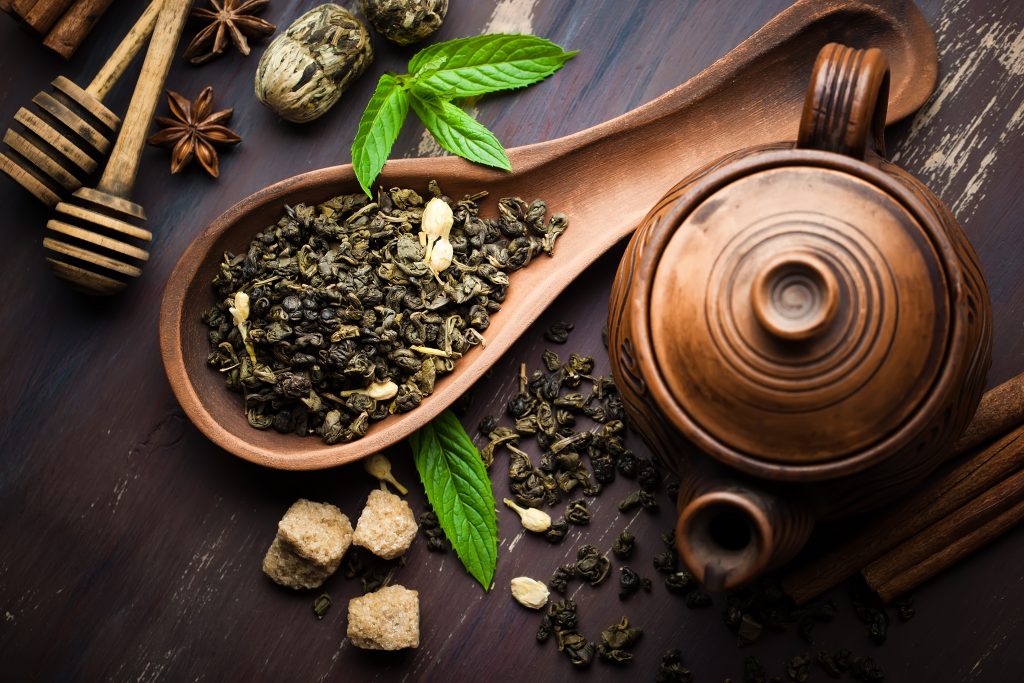Is Your Favorite Steeped Beverage a True Tea?

As temps drop, we tend seek soothing warmth: adding extra layers of clothing, pulling out the fleece throws, and sipping hot beverages. Americans consumed 84 billion servings of tea in 2018. That’s equal to 3.8 billion gallons – that’s a BIG cup! Dare we destroy your idyllic downtime of cozying up to a ‘cuppa’? Would you be shocked to know that the hot, soothing beverage you’re enjoying might not actually be tea?
Have clever marketers been deceiving us all along? How could it be our beloved lemon ginger lifter or nighty night brew are not actually tea at all? Before you get upset and wonder what other fibs you’ve been duped into believing, lets look into what tea is and what it is not.
Tea Defined

Though tea has come to be synonymous with ‘any hot beverage made from dried plants’ that definition is not entirely accurate. Tea is not a beverage. Wait . . . what?! The word ‘tea’ actually refers to a specific plant, Camellia Sinensis. This evergreen plant, native to China, is the common tea plant, and the ingredient for what is considered ‘real tea’ — the varieties of ‘real tea’ are black, green, white, and Oolong. All these different types are made using the same leaf. ‘Real’ tea comes under such aliases as English Breakfast, Earl Grey, and Chinese, and Japanese green teas. How the tea leaves are processed and the length of time they are left to oxidize determines the tea type:
- Black tea: full grown leaves left to oxidize (or in lay terms ‘get brown’) before they are dried.
- White tea: baby tea leaves left to dry.
- Green tea: full grown leaves gently steamed or pan fired to preserve bright green color and taste.
- Oolong: full grown leaves lightly shaken in bamboo baskets to oxidize and then left to dry. Crafting Oolong is one of the most time-consuming processes and therefore, Oolong is one of the more expensive teas
So, if one were to adhere to the purest definition of tea, the absence of one of these tea types in the list of ingredients and/or in the product name, means the product is technically NOT tea.
Herbal ‘Tea’ Not Really ‘Tea?’

So, if it doesn’t contain black, white, green, or Oolong tea, what are all those other products we’ve been happily sipping all these years? Any hot water infusion made with leaves (other than the Camellia Sinensis), roots, berries, seeds and spices, is technically a tisane (pronounced ti-zahn). These include some of the most popular ‘tea’ varieties like chamomile, peppermint, and ginger, and even more unique varieties such as lavender, rose, orange, or peach.
Herbal tisanes have been around as long as traditional tea and are often touted as contributing to various health benefits. In fact, according to Nielsen, during cold and flu season, consumers spend 28% more on herbal teas compared to the average month. As with the rest of the food and beverage market, customers want to experience rare international flavors, so expect to see additional herbal offerings popping up that contain exotic ingredients like turmeric or moringa.
Real Tea or Not Real Tea – That is the Question
Do you believe herbal tea is ‘real’ tea? Take our interactive poll to see how many people agree. If enough people agree, perhaps we can petition Merriam Webster…
Why are herbal tisanes often referred to as ‘Herbal Tea’ if they don’t fall into the textbook definition of tea? While this is only speculation, it could be that, as consumers, calling these products ‘tea’ makes it easier for us to understand the product. And, who wants to use the word, ’tisane’? It sounds a little ‘snooty’ to us, but we won’t judge if that’s your preference.
Whether your preference is for an actual tea variety or if you prefer teas of the herbal persuasion, we can all agree that a flavorful warm beverage is quite soothing on a cold day. Yes, you can drink all these ‘teas’ chilled, as well, but that discussion is for another post.
Interesting to note: In the United States, Millennials account for 87% of tea drinkers (yes, this includes tisanes – sorry, we’re choosing sides). No matter what you call them, for retailers, it is plain to see that these hot beverages are hot and the forecasts show they are going to keep gaining in popularity.

Hi! Let us know what's on your mind.